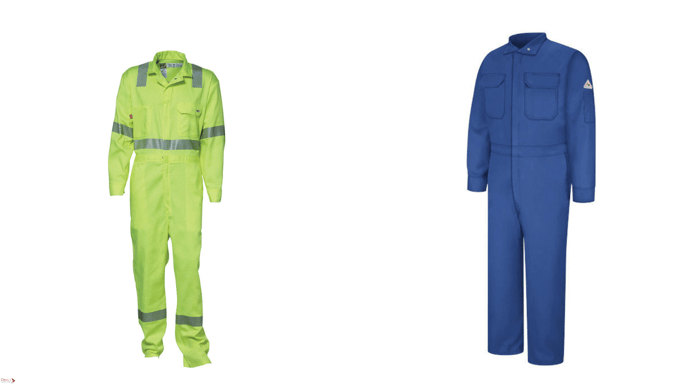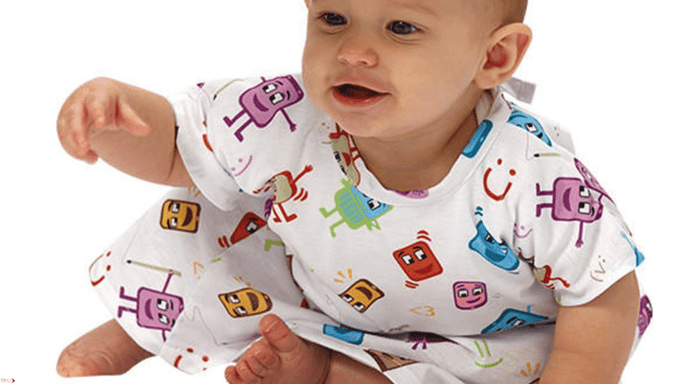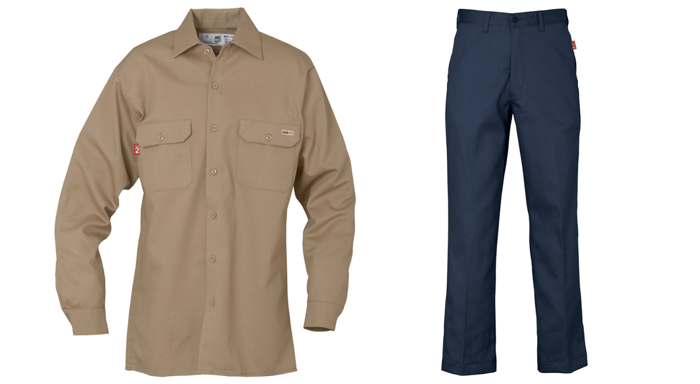7 Tips For Choosing Coveralls and What is Their Purpose?
Coveralls, sometimes referred to as overalls, although they are different, are a type of garment used to protect clothing. In this post we offer 7 tips for choosing coveralls. Coveralls have gone through numerous iterations over the years to reach their current form. Although originally made of denim, today work coveralls are made from a variety of fabric types and colors as well as features that include zipper closures, insulation, anti-static, pockets, and gripper/snap closures. In this article we will provide some background and tips for choosing the right coverall for your needs. At Direct Textile Store, we understand the importance of quality coveralls, which is why we offer a wide range of options to suit every need. In this comprehensive guide, we'll explore everything you need to know about coveralls, from sizing and styling to different types and uses.
What is the difference between coveralls and overalls?
Overalls usually consist of a light material covering used over one’s ordinary clothes. Unlike coveralls, they typically do not protect the arms.
Coveralls, often referred to as work coveralls, are most often worn as a protective clothing over street clothes, usually a work-based environment. They can be used for a lot of work environments including painting and decorating, mechanical and factory work, farming and other activities where clothes can become compromised.
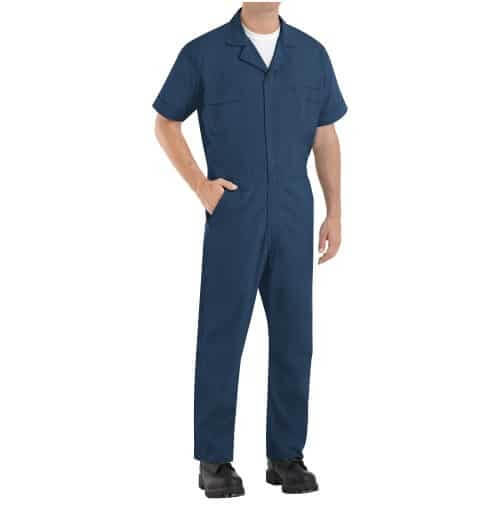
What is the purpose of work coveralls?
The number one reason for wearing uniform coveralls is for protection against hazards including chemical, mechanical, thermal, or biological. They also can guard against grease, grime, and oil stains. However, they may not protect the body of the wearer against certain elements and conditions.
How to Wear Coveralls?
Wearing coveralls correctly ensures maximum protection and comfort on the job. Here are some tips for properly wearing coveralls:
- Step into the coveralls and pull them up to your waist.
- Fasten any closures, such as zippers or snaps, to secure the coveralls in place.
- Adjust the shoulder straps, if applicable, to ensure a snug and comfortable fit.
- Make sure the sleeves and pant legs are the appropriate length to prevent tripping hazards.
- Tuck any excess fabric into your boots or shoes to avoid snagging.
By following these steps, you can ensure that your coveralls fit properly and provide the protection you need while you work.
Do I choose bib overalls or coveralls?
Chose coveralls if you need the absolute maximum warmth, wind, and all over body protection. Bib overalls are more versatile and durable garments and provide a bigger range of upper body motion, more airflow around your torso. than coveralls. You already have or do not need an insulated coat and just need a bottom layer.
Are coverall’s considered Personal Protective Equipment (PPE)?
Although some healthcare practitioners are using coveralls to protect the whole body from patients with transmissible microbes like COVID-19, currently there are no guidelines from the World Health Organization (WHO), the U.S. Centers for Disease Control and Prevention (CDC), nor the U.S. Occupational Safety and Health Administration (OSHA) regarding use of coveralls for protection from the COVID-19 coronavirus during patient care.
Level 1 and level 2 AAMI isolation gowns provide protection that has been tested to offer a level of certified protection, with level 1 offering a minimal level of fluid barrier protection and level 2 providing a low level of fluid barrier protection.
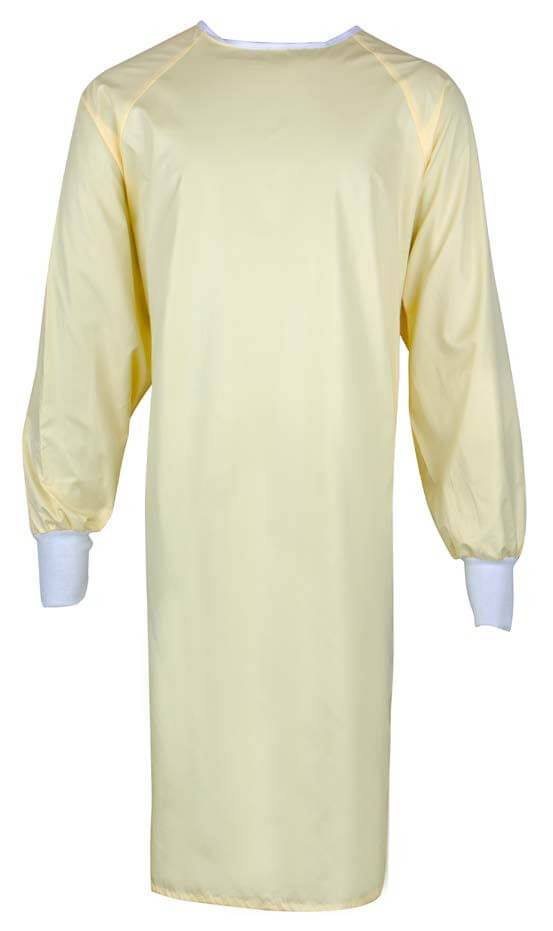
According to CFR §170.305 for coverall’s to be considered PPE they must be made of material that allows for no measurable movement of the pesticide being used through the material during use. PPE means devices and apparel that are worn to protect the body from contact with pesticides or pesticide residues, including, but not limited to, coveralls, chemical-resistant suits, chemical-resistant gloves, chemical-resistant footwear, respirators, chemical-resistant aprons, chemical-resistant.
What are the Different Types of Coveralls?
They come in various styles and designs to suit different preferences and needs. Some of the most common types include:
- Work Coveralls: These coveralls are designed for general-purpose use in a wide range of industries, offering protection against dirt, debris, and minor hazards.
- FR Coveralls: Fire-resistant coveralls are made from materials that are inherently flame-resistant or have been treated with flame-retardant chemicals to provide protection against fire and heat.
- Disposable Coveralls: Disposable coveralls are made from lightweight, breathable materials and are designed for single-use applications, such as painting, cleaning, or handling hazardous materials.
What do you wear under coveralls?
No matter what the weather is, it is best to choose long sleeves and pant legs under coveralls as having this base layer on your skin will help in avoiding undesirable chafing caused by wearing coveralls throughout the day. Coveralls are made to be worn over regular clothes. Although you do not have to wear pants and shirts under coveralls, it is often advisable to prevent chaffing of the skin. Also, depending on the work environment it is easy to take the coveralls off when you leave the job area.
Can you wash insulated coveralls in the washing machine?
Insulated coveralls can usually be washed in a washing machine. Start by reading the care instruction label on your coveralls. Always wash coveralls separately from other pieces of laundry to prevent chemicals, dirt, pesticides, or other harmful elements from becoming attached to other pieces of clothing. Insulated coveralls can be washed in water less than 140ºF. (On most washing machines this is the “warm” setting. Use a normal, mild detergent. If your coveralls still have soil or stains after running through the wash cycle you can either scrub the wet coveralls by hand with soapy water or with a soft scrub brush.
After your coveralls are washed and clean to your satisfaction, you can either line dry them or place your coveralls in the dryer for no more than 10 minutes, on the tumble dry or lowest setting. It is recommended to not use chlorine or hydrogen peroxide bleach, laundry softeners or starch.

We hope these tips for choosing coveralls has been helpful. Whatever your work environment calls for Direct Textile Store has a wide selection of uniform coverall's that are generously proportioned and constructed, with wrinkle resistant fabric that ensures a professional look wash after wash. Shop online or call one of our friendly customer service representatives.
If you need help placing an order or have questions, call one of our live Customer Service agents at 800-615-5822 who are available Monday-Friday from 9am-5pm EST, or send an email to [email protected]
Direct Textile Store ships to all US states, including Alaska and Hawaii, US Territories, Canada, Puerto Rico, St. Thomas, and St. Croix.

About the Author
Haley Bridges, Marketing Assistant at Direct Textile Store
Haley Bridges has served as Marketing Assistant at Direct Textile Store, where she specializes in hospitality linens, uniforms, and bulk textile solutions. She works closely with hotels, restaurants, and healthcare facilities to match them with durable, high-quality products that balance both performance and value. Haley's expertise in textile sourcing and merchandising strategy helps businesses make confident purchasing decisions while staying ahead of industry trends.
Copy & Paste to Link to this Post!
<a href="https://directtextilestore.com/blog/7-tips-for-choosing-coveralls/">7 Tips for choosing coveralls</a>
